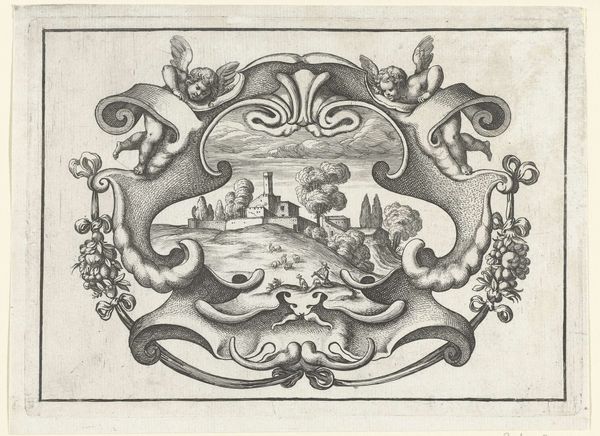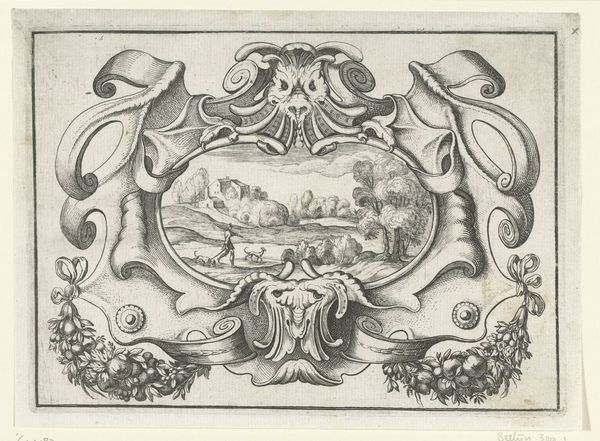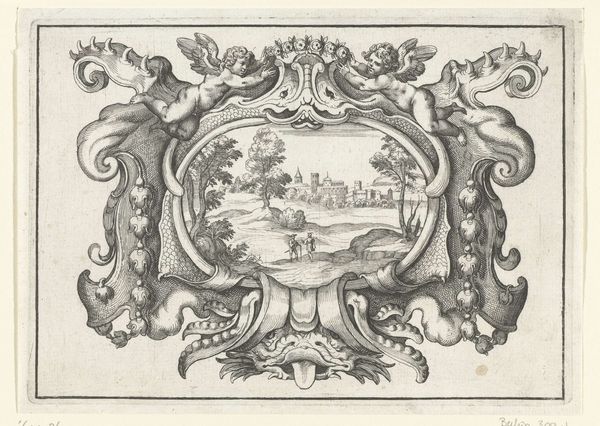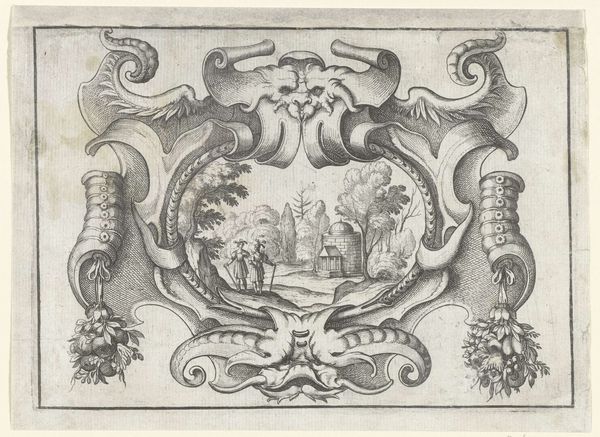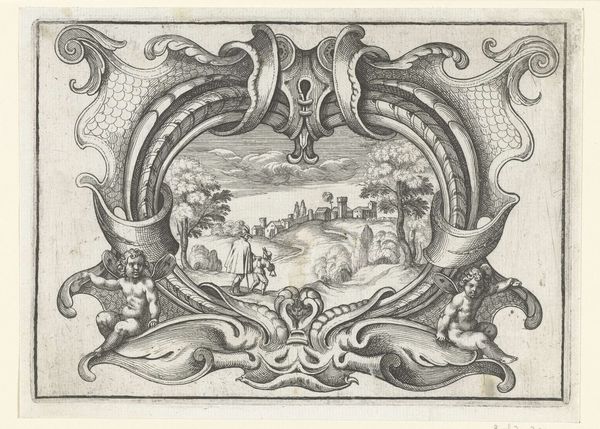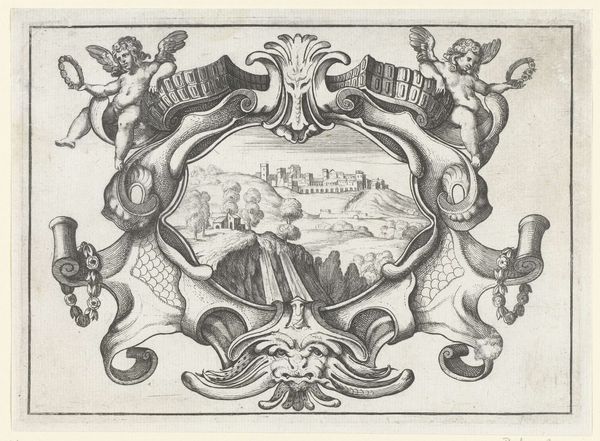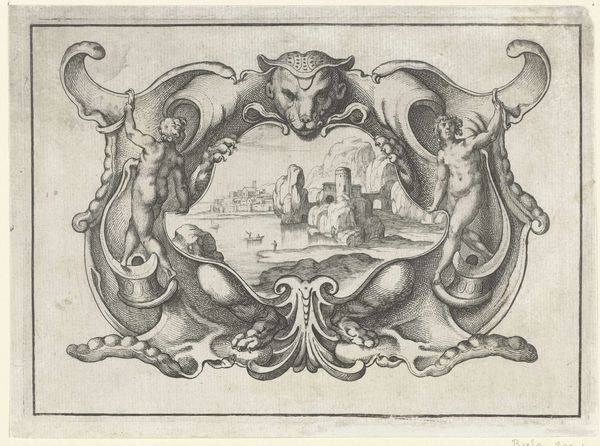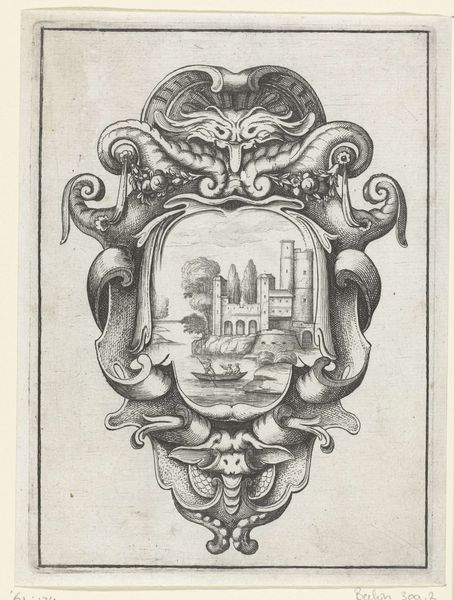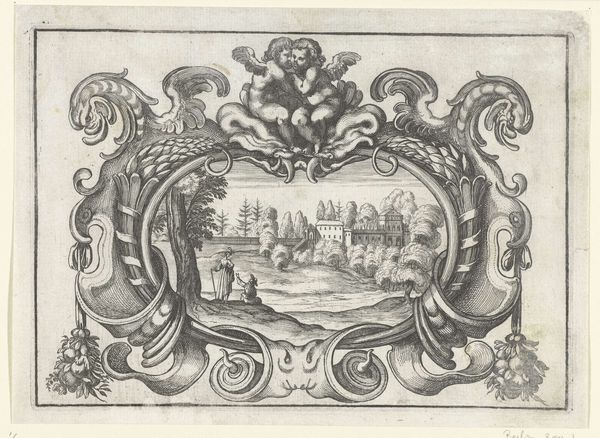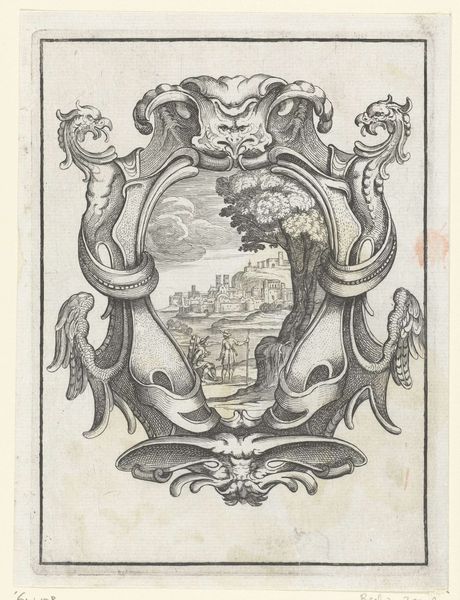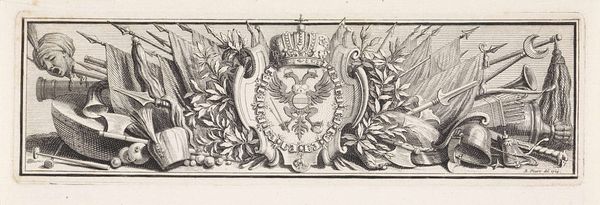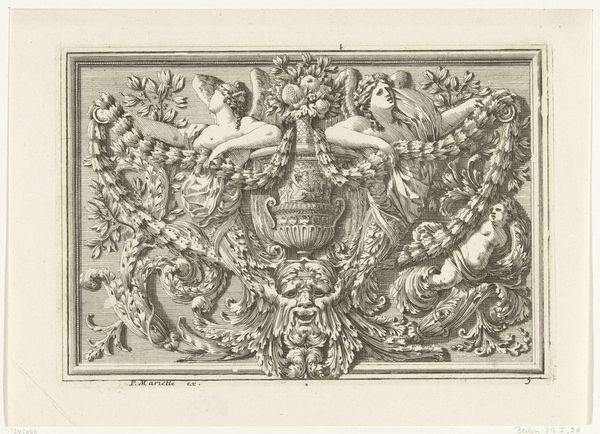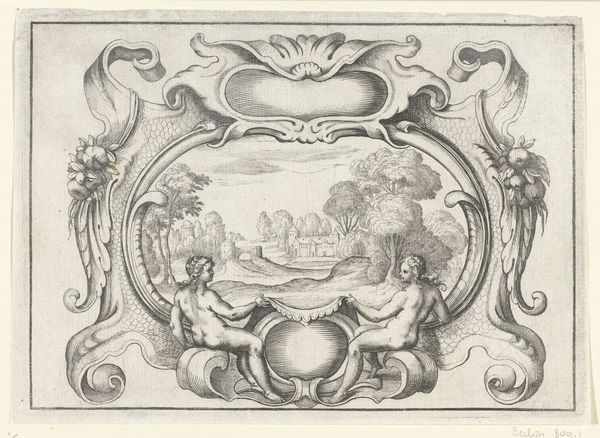
print, engraving
#
baroque
# print
#
landscape
#
figuration
#
engraving
Dimensions: height 140 mm, width 197 mm
Copyright: Rijks Museum: Open Domain
Editor: Here we have "Cartouche met cherubijn en twee putti," a print made by Daniel Rabel in 1634, utilizing engraving techniques. It's striking how the symmetrical, ornate frame contrasts with the pastoral landscape nestled inside. What jumps out at you in this piece? Curator: Formally speaking, the composition operates on a principle of duality. Observe how the symmetrical cartouche, bristling with decorative elements – cherubs, scrolls, and masks – firmly contains the receding landscape. The graphic quality is also interesting; note the crispness of the engraved line, which allows for the articulation of detail within both the ornate frame and the serene landscape. Do you see how the artist balances the density of the frame with the openness of the landscape through variations in line weight and density? Editor: Yes, now that you mention it, the density of lines does guide the eye. How would you interpret this balance of detail and open space? Curator: The opposition between the artifice of the cartouche and the naturalism of the landscape generates a productive tension. It posits a dialectic between decoration and representation. Note also the semiotic aspect of the cartouche as frame. It quite literally "frames" our perception. Does this framing alter how we see the landscape within, changing how it feels as though viewing another world? Editor: It definitely draws more attention to the landscape as a picture. So, by focusing on these formal contrasts, we can move towards a better understanding of its visual language? Curator: Precisely. A deep understanding of the pictorial construction lets us engage meaningfully with any potential narratives the artwork suggests. What did you learn about visual languages during this examination of line, balance, tension and space? Editor: The importance of line work creating contrast in a two dimensional space. I see now how crucial the interplay between artifice and nature is. Thanks for your expertise in teaching the construction and purpose of visual language within art!
Comments
No comments
Be the first to comment and join the conversation on the ultimate creative platform.
